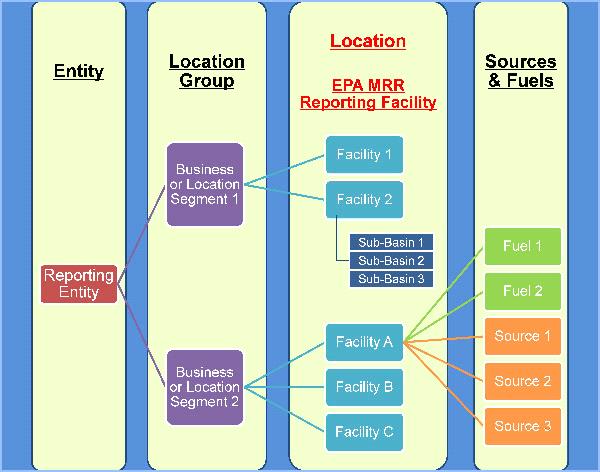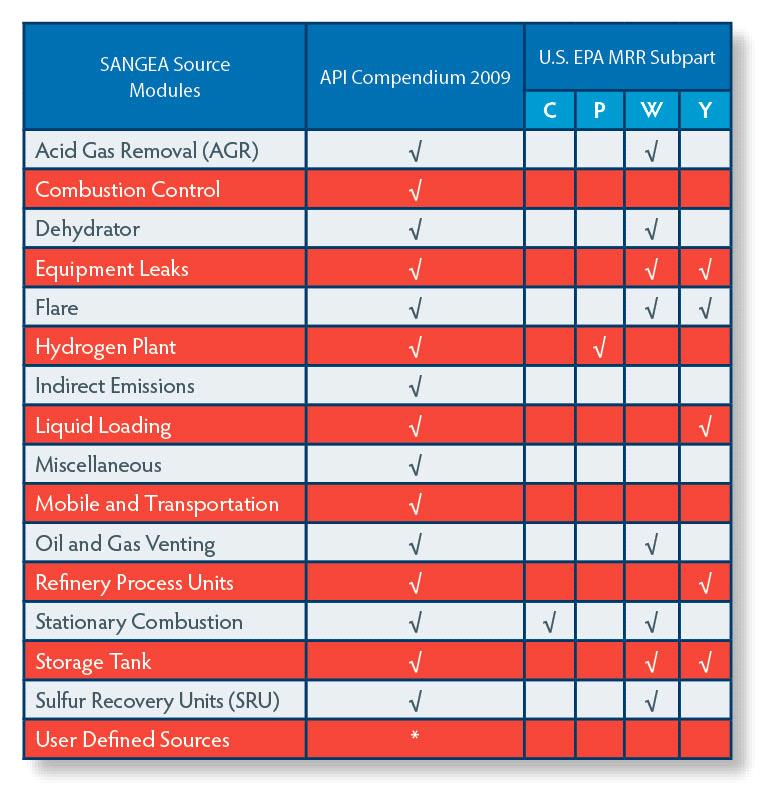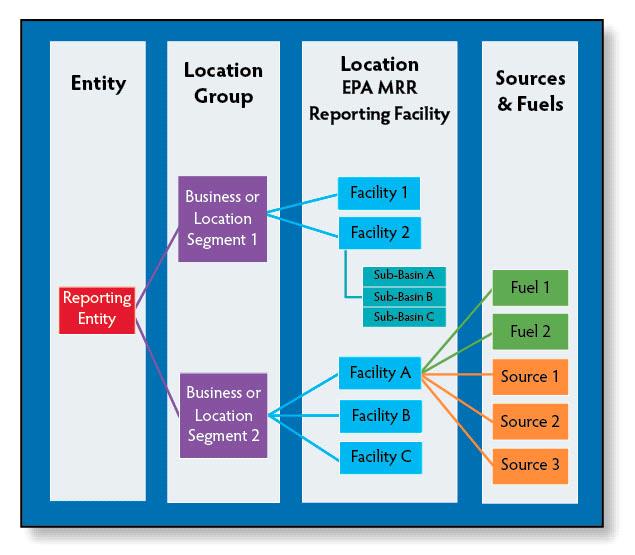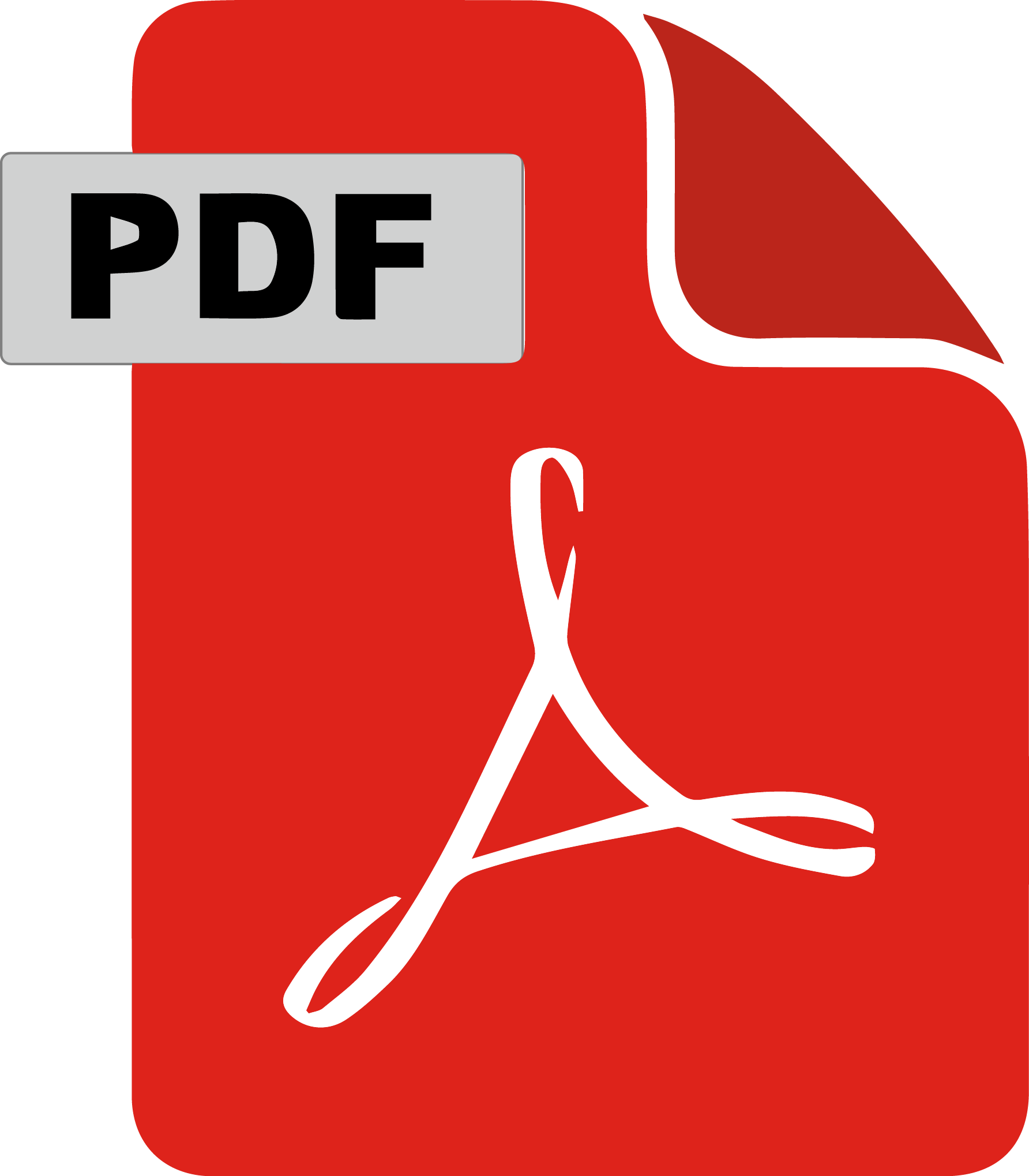Get Support
123-456-789-10
API Releases SANGEA 4.2 for Standardized GHG Emissions Reporting
Since the early 2000's, the American Petroleum Institute (API) has supported the SANGEA™ software tool for petroleum, natural gas and petrochemical companies to quantify greenhouse gas (GHG) emissions and to standardize emissions reporting. Regulatory changes, including mandatory reporting requirements for GHG emissions globally, prompted API to sponsor a major overhaul of the software including current calculation methodologies. As announced in the Summer 2013 issue of Environmental Quarterly, API chose Trinity Consultants to develop its SANGEA™-4 software, with version 4.1 released in 2013. SANGEA™ 4.2, the newest release, addresses U.S. EPA's reporting changes to the Mandatory Reporting Rule (MRR), Subpart W for Reporting Year (RY) 2015 and refines reporting functions for the API Compendium.
SANGEA™-4 Overview
SANGEA™-4 is a desktop database program with a user-friendly interface that can be used to manage various types of emission sources throughout a large entity for corporate performance and/or regulatory reporting requirements. In order to build a solution that would promote long-term software usability and easy maintenance, the new product replaces a spreadsheet-based application to a Web-based product developed with a Microsoft .NET framework and Access database files for source information storage.
SANGEA™-4 provides calculation methodologies in various modules based on API's Compendium 2009 and U.S. EPA's MRR for GHG emissions, Subparts C, P, W, and Y. The software includes emission factors for criteria pollutants, as well, which enables users to quantify emissions for both GHG and criteria pollutants in one tool. SANGEA™-4 also can be used to track energy consumption and normalize emissions on a production basis (e.g., ton GHG/bbl of product). The information from SANGEA™-4 is used for API GHG benchmarking studies and to comply with Federal GHG emission mandatory reporting rules for the petroleum and aligned industries.
U.S. EPA MRR Subpart W RY2015 Changes
On February 4, 2016, U.S. EPA released the Reporting Year (RY) 2015 GHG emission reporting form for Subpart W. The RY 2015 reporting incorporates significant changes from the RY 2014 report, including new data element reporting requirements that are not explicitly clear after the changes to the mandatory reporting rule. A summary of key GHG emission reporting requirements that are incorporated in SANGEA™ 4.2 is provided as follows:
API Compendium Changes
Since the release of SANGEA 4.1, we have collected feedback from international users and made a few updates to refine the reporting functionalities.
SANGEA™-4 Reporting Hierarchy
The reporting entity hierarchy is retained in SANGEA™ 4.2 including the reporting entity, location group, location, and source set up process, with extended steps to incorporate more source-specific requirements under multiple protocols. Sources are configured for a specific location. Multiple locations/location groups can be created under one SANGEA™ 4.2 working file (i.e., a Microsoft Access database file), which allows companies to report emissions by business operation groups, geographical regions, or regulatory reporting entities. The figure below provides a typical reporting entity hierarchy structure that can be established in SANGEA™ 4.2.

SANGEA™-4 Emission Source Modules and Functions

There are many user-friendly editing functions included in SANGEA™ 4.2 that allow users to create, delete and edit sources quickly, such as the following:
SANGEA™ 4.2 is available from API for organizations in the petroleum and other applicable industries. Upon the original release of SANGEA 4, Ms. Adefemi, Senior Statistical Analyst at API, stated that, "The objective of sponsoring SANGEA™-4 is to provide a user-friendly reporting tool to the Oil & Gas industry and to encourage consistent reporting of GHG emissions. API sponsors an annual survey on GHG emissions and criteria pollutants. SANGEA™-4 will assist the industry in recording and benchmarking consistent and comparable data, and also in analyzing the environmental footprint." Many oil and gas companies in the US and abroad have adopted SANGEA™-4 for corporate GHG reporting requirements.
SANGEA™-4 development is led by T3, a division of Trinity Consultants that implements EH&S information management solutions (EMIS), with commercial software development expertise from the BREEZE software group. T3 has almost 20 years of experience developing custom software and implementing EMIS solutions in a myriad of industries.
breeze@trinityconsultants.com
Webinar: SANGEA Updates Due to US EPA GHG Emissions RY2015 Subpart W Changes
Learn more the updates Trinity Consultants/Digital Solutions made to SANGEA as a result of the significant changes to the Reporting Year 2015 GHG emission reporting form for Subpart W released by US EPA on Feb 4, 2016. This video is a portion of a webinar held February 26, 2016.
SANGEA Updates for USEPA 40 CFR 98 Subpart W GHG Emissions Reporting Year 2015
On February 4, 2016, US EPA released the Reporting Year (RY) 2015 GHG emission reporting form for Subpart W. The RY 2015 reporting has significant changes from the RY 2014 report, including new data element reporting requirements that are not explicitly clear after the changes to the mandatory reporting rule. Trinity Consultants has performed a thorough evaluation of the new forms, and has identified more than 80 changes to reporting data elements. Companies must report these new data elements and update the emission reporting tools to meet the new reporting requirements.
For API SANGEA 4.1 software users, there is good news. With API’s continued support, Trinity is in the process of making the critical changes and updating SANGEA for the RY 2015 Subpart W reports. Our target release date for the updated SANGEA is February 19th 2016.
breeze@trinityconsultants.com
Complimentary SANGEA 4.1 Refresher for EPA MRR reporting
The slides from this webinar provide an introduction to SANGEA™ 4.1 and perspective on how it addresses reporting requirements under Subpart W. It also provided an overview of the software platform and architecture, and GHG emission source modules included in the tool.
Using SANGEA4 to Manage GHG Emissions Data in the Petroleum Industry
Presented at the North American Oil and Gas Conference on October 21-22, 2014 in Calgary, AB. Written by John P. Fillo, PhD, CPEA of Trinity Consultants.
API Releases SANGEA 4.1for Standardized GHG Emissions Reporting
Since the early 2000's, the American Petroleum Institute (API) has supported the SANGEATM software tool for petroleum, natural gas and petrochemical companies to quantify greenhouse gas (GHG) emissions and to standardize emissions reporting. Regulatory changes, including mandatory reporting requirements for GHG emissions, prompted API to sponsor a major overhaul of the software including current calculation methodologies. As announced in the Summer 2012 issue of Environmental Quarterly, API chose Trinity Consultants to develop its SANGEA-4 software. The free Beta version 4.0 was released in 2012 and the final version SANGEA 4.1 is now available.
SANGEA-4 is a desktop database program with a user-friendly interface that can be used to manage various types of emission sources throughout a large entity for corporate performance and/or regulatory reporting requirements. In order to build a solution that would promote long-term software usability and easy maintenance, the new product replaces a spreadsheet-based application with a Web-based product that uses a Microsoft .NET framework and Access database files for source information storage.
SANGEA 4.1 provides calculation methodologies in various modules based on API's Compendium 2009 and corresponding subparts of U.S. EPA's Mandatory Reporting Rule (MRR) for GHG emissions. The new software includes emission factors for criteria pollutants that enable users to quantify emissions for both GHG and criteria pollutants in one tool. SANGEA can also be used to track energy consumption and normalize emissions on a production basis (e.g., ton GHG/bbl of product). The information from SANGEA may be used for API GHG benchmarking studies and to comply with Federal GHG emission mandatory reporting rules for the petroleum and aligned industries.
The reporting entity hierarchy applied by existing SANGEA users is retained in SANGEA 4.1, including the reporting entity, location group, location, and source set up process, with extended steps to incorporate more source specific requirements under multiple protocols. Sources are configured for a specific location. Multiple locations/ location groups can be created under one SANGEA 4.1 working file (i.e., a Microsoft Access database file), which allows companies to report emissions by business operation groups, geographical regions, or regulatory reporting entities. The figure below provides a typical reporting entity hierarchy structure that can be established in SANGEA 4.1.

.jpg)
SANGEA 4.1 integrates two GHG reporting protocols with numerous source types. The table below shows the available source “modules.” Within each module, wizards help users set up emission sources and multiple calculation methods for the protocols. The software guides users to specify source parameters that are needed for GHG emissions calculation and/or reporting requirements. These source parameters are stored in the source database for future emission inventory reports. SANGEA 4.1 also offers a “User Defined Sources” module under the API Compendium 2009 that allows users to define sources that are not already established in SANGEA.
There are many user-friendly editing functions included in SANGEA 4.1 that allow users to create, delete and edit sources quickly, such as the following:
SANGEA 4.1 is available from API for organizations in the petroleum and other applicable industries. Ms. Adefemi, Senior Statistical Analyst at API stated that, “The objective of sponsoring SANGEA-4 is to provide a user-friendly GHG reporting tool to the Oil & Gas industry and to encourage consistent reporting of GHG emissions. In 2014, API will continue its annual survey on GHG emissions and criteria pollutants. SANGEA-4 will assist the industry in recording and benchmarking consistent and comparable data, and also in analyzing the industry's environmental footprint.” Many large oil and gas companies have adopted SANGEA for corporate GHG reporting requirements.
SANGEA-4 development is led by Digital Solutions, a division of Trinity Consultants that implements EH&S information management solutions (EMIS), with commercial software development expertise from the BREEZE software group. T3 has over 15 years experience developing custom software and implementing EMIS solutions in myriad industries.
breeze@trinityconsultants.com
SANGEA 4.0 - Facilitating Standardization of Greenhouse Gas Emissions Quantification for the Petroleum Industry
Presented at the 20th International Emissions Inventory Conference in Tampa, FL, this paper provides an overview of SANGEA-4 functions and features that can streamline reporting and recordkeeping processes. Examples, including emissions calculations based on both methods required by USEPA MRR and API Compendium, are presented to demonstrate how a company with both U.S. and international operations can apply the new software for multi-protocol reporting.
 Read the full paper.
Read the full paper.
Written by Sue Sung of Trinity Consultants/Digital Solutions and Adebukola Adefemi of API.
New SANGEA Tool Enables Standardized GHG Emissions Reporting
SANGEA-4 is a desktop database program with a user-friendly interface that can be used to manage various types of sources throughout a large entity for corporate and/or regulatory reporting requirements. In order to build a solution that would promote long-term software usability and easy maintenance, the new product was migrated from its previous spreadsheet-based application to stand-alone software in Microsoft .NET framework with Access database files for storing source information.
SANGEA-4 provides calculation methodologies in various modules that are grouped based on API's Compendium 2009 and corresponding subparts of the U.S. EPA's Mandatory Reporting Rule (MRR) for GHG emissions. The new software also includes emission factors for criteria pollutants, which enable users to quantify emissions for both GHG and criteria pollutants in one software tool. The information from SANGEA is used for API GHG benchmarking studies, climate change industry reporting, and submissions to federal GHG emission mandatory reporting rules for the petroleum industry.
The new SANGEA integrates two GHG reporting protocols with numerous source types in one software tool. The table shows the source “modules” available in SANGEA-4. Under each module, wizards help users set up emission sources and multiple calculation methods without reading the methods in the protocols. The software guides users to specify source parameters that are needed for GHG emissions calculation and/or reporting requirements. These source parameters are stored in the software source database for future emission inventory reports. SANGEA-4 also offers a “User Defined Sources” module under the API Compendium protocol that allows users to define sources that are not already established in the two protocols of the SANGEA reporting system.
There are many user-friendly editing functions included in SANGEA-4 that allow users to create, delete and edit sources quickly. The following functions are examples of these user-friendly features:
The American Petroleum Institute distributes SANGEA™ free of charge to organizations in the petroleum and other applicable industries. Ms. Adefemi of API stated that, “The objective of sponsoring SANGEA-4 is to provide a user-friendly reporting tool to the Oil & Gas industry and to encourage consistent reporting of GHG emissions. API sponsors an annual survey on GHG emissions and criteria pollutants. SANGEA-4 will assist the industry in recording and benchmarking consistent and comparable data, and also in analyzing the environmental footprint.” Many large oil and gas companies have adopted SANGEA for corporate GHG reporting requirements.
SANGEA-4 development is led by Digital Solutions, a division of Trinity Consultants that implements EH&S information management solutions (EMIS), with commercial software development expertise from the BREEZE software group. Digital Solutions has over 15 years experience developing custom software and implementing EMIS solutions in myriad industries.

